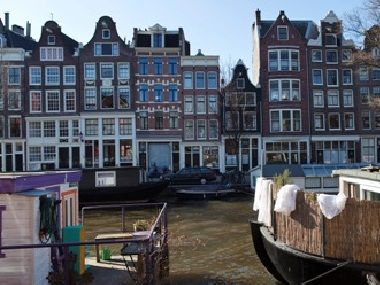Historically, the major Dutch banks have had a monopoly over their domestic mortgage market. The financial crisis, however, has changed that. The Dutch housing market has begun to show clear signs of stabilisation and recovery since 2013, with national house prices up 15% from their lows, yet funding and regulatory constraints meant that banks were becoming increasingly reluctant to take on mortgage exposure – creating a major gap for others to fill.
Over the past five years, Dutch insurers and pension funds have increasingly begun to enter the market, a trend that has accelerated more recently and these non-bank investors made up a third of the total €80bn annual Dutch mortgage volume in 2016.
Indeed, Dutch mortgages are increasingly being recognised as an attractive investor asset allocation, offering attractive comparative returns with a strong historical performance through the crisis.
In an environment where evolving regulations such as Solvency 2 are encouraging investors to explore direct investments in markets, away from traditional securitisations, the Dutch residential mortgage whole loan market ticks all of the boxes.
As the recent election demonstrated, the Netherlands remains a stable country with both a strong welfare system and a firm commitment to openness. Certainly, the victory of the centre-right VVD party reinforces the country’s preference for generous individual benefits regarding unemployment or illness, and maintenance of the deductibility of mortgage interest payments from any taxable income. This will continue to support the tendency for Dutch borrowers to meet their mortgage obligations.
The Netherlands represents one of the European Continent’s strongest credit markets with Triple A ratings from each of the main rating agencies. Mortgage rates, however, remain higher than other comparable European markets as the limited influx of foreign capital in recent years has not fully addressed the funding gap created by the financial crisis – despite Dutch mortgage portfolios having consistently experienced one of the lowest historical loss rates in Europe, even during the financial crisis.
As institutions across the Continent have intensified their search for yield in the current environment, this new asset class looks set to be a significant feature of the European real estate investment landscape in 2017. But, although Dutch mortgages have now become a recognised opportunity for investors, finding the right way to access the asset class in the right way remains a challenge.
THE EMERGENCE OF NON-BANK LENDING
As regulatory pressures create a space into which new players can enter, the Dutch banks’ share of the market for new mortgages fell to its lowest last year. Non-bank lenders – which sell the loans directly to institutional investors – are expected to account for more than €25bn of new mortgage lending through 2017. To date, this market has been dominated by Dutch institutional investors.
In 2016, Dutch mortgage specialist CMIS Group partnered with Natixis, the international financial services arm of Group BPCE, to launch their own Dutch lending platform (with a mortgage brand called Merius Hypotheken) to rival the traditional banks.
Such platforms not only benefit investors looking for yield, but also Dutch homebuyers. Institutional investors now have the opportunity to support homebuyers by giving them access to a competitive mortgage rate and, in turn, access to an attractive, diversified, risk-adjusted asset class.
The large legacy institutions find it challenging to compete on rates because of current regulatory policies that require them to offer the same interest rates to both new and existing customers. Over recent years, thousands of Dutch homebuyers have borrowed from institutional investors – who can offer long-term loans at attractive interest rates and that match their long-term liabilities – rather than the banks, which conversely are more reliant on short-term funding and more stringent capital requirements, making such longer-term lending a challenge.
The lasting legacy of the financial crisis is its disruption to the pan-European legacy lending environment. Nearly a decade on, banks still remain cautious lenders – constrained by unprecedented regulatory pressures. Now, through new lending platforms and partnerships, investors can reap a long-term yield from the Dutch mortgage market, while homebuyers are given the means to borrow at an attractive rate.
This win-win situation also answers the Dutch state’s call for foreign money to help fill the funding gap, which has become increasingly urgent as demand for housing continues to grow. Such innovative initiatives will ensure that the free markets can continue to flourish.
